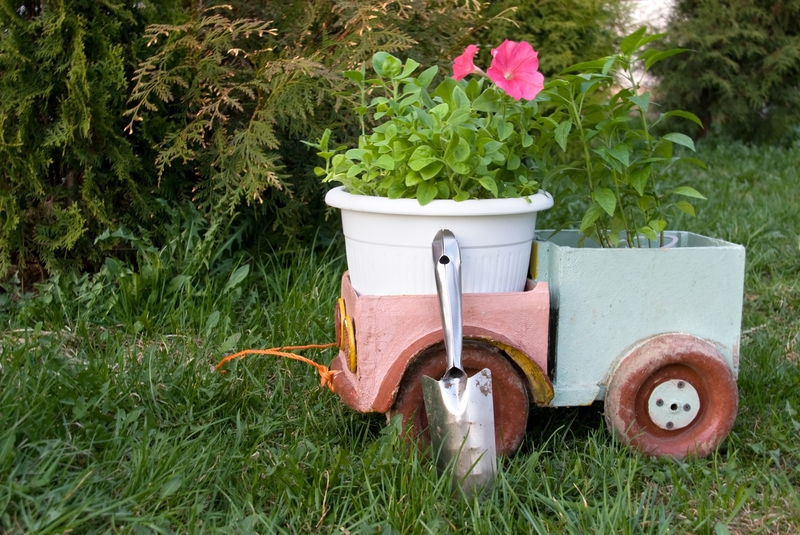How to Make PPE Waste Disposal Safe and Eco-Conscious
Personal Protective Equipment (PPE)--such as masks, gloves, gowns, and face shields--has played an essential role in safeguarding public health during infectious disease outbreaks and in various industries. But the increased use of PPE has led to a surge in waste, threatening both environmental and human health. Learning how to make PPE waste disposal safe and eco-conscious is crucial for businesses, healthcare facilities, and even individuals.
In this comprehensive guide, you'll discover practical strategies, best practices, and innovative approaches for minimizing environmental harm while ensuring safe disposal of PPE waste.
Understanding PPE Waste and Its Environmental Impact
What Is PPE Waste?
PPE waste refers to single-use items like medical masks, gloves, gowns, face shields, and shoe covers, as well as reusable items past their usability. With soaring PPE consumption in healthcare, industrial, and community settings, managing this waste stream responsibly is more important than ever.
Why Is PPE Waste a Concern?
- Non-biodegradability: Most PPE products are made from synthetic polymers such as polypropylene, making them non-biodegradable and persistent in landfills for years.
- Microplastic Pollution: Discarded PPE breaks down into microplastics, which can contaminate soil, waterways, and eventually enter food chains.
- Infectious Hazards: Improper disposal may spread pathogens, posing a risk to waste handlers and the general public.
- Wildlife Risks: Animals can become entangled in PPE waste or ingest it, leading to injury or death.
Therefore, PPE waste management must prioritize both safety and ecological responsibility.

How to Make PPE Waste Disposal Safe and Eco-Conscious: Key Principles
For eco-friendly PPE waste disposal, the best strategies combine safety, compliance, and a commitment to minimizing ecological harm. Here are foundational principles to guide your efforts:
- Reduce: Limit usage where appropriate and select reusable PPE when feasible.
- Segregate: Separate PPE waste from general waste to prevent cross-contamination.
- Decontaminate: Properly disinfect reusable PPE or pre-treat infectious waste before disposal.
- Recycle: Identify recycling programs or partner with specialized facilities for plastic PPE items.
- Educate: Train staff and educate communities on correct disposal protocols.
Proven Methods for Safe PPE Waste Disposal
1. Segregation of PPE Waste
*Proper segregation* at the source is crucial. Use color-coded bins:
- Red bags: Infectious or clinical waste
- Yellow bags: Clinical waste for incineration
- Blue/green bins: Non-infectious, recyclable PPE (if allowed)
2. Storage and Handling
- Store PPE waste in leak-proof, puncture-resistant containers.
- Keep waste storage areas secure to prevent animal and unauthorized human access.
- Minimize handling and move full waste bags/containers to designated disposal areas promptly.
3. Disinfection and Pre-Treatment
For healthcare and infectious PPE waste, pre-treatment (like chemical disinfection or autoclaving) reduces pathogen risks. Do not attempt to disinfect or reuse single-use items unless guided by official protocols.
4. Managed Collection and Transportation
- Use dedicated vehicles for transporting PPE waste.
- Train drivers and handlers on safety and spill prevention.
- Record waste transfer details for liability and traceability.
5. Final Disposal Methods
The most common PPE disposal options include:
- High-temperature incineration: Destroys pathogens and reduces volume but can generate air pollutants if not properly controlled.
- Engineered landfills: A last resort when incineration or recycling isn't possible. Ensure landfills are lined and managed to prevent leaching.
- Specialist recycling: Some companies now recycle non-contaminated PPE plastic via pyrolysis, mechanical recycling, or chemical repurposing. Contact local recycling services for options.
Best Eco-Conscious Practices for PPE Waste Management
1. Choose Sustainable PPE Products
Increasingly, manufacturers offer biodegradable PPE made from plant-based or compostable materials. While not currently widespread, choosing these products where possible significantly lowers long-term environmental risks.
2. Encourage Reusable PPE
- Where safety permits, select reusable gowns, face shields, and masks made from washable or autoclavable materials.
- Ensure proper laundering and sterilization to maintain infection control standards.
3. Implement PPE Recycling Initiatives
Seminal partnerships and pilot programs now make PPE recycling more accessible.
- TerraCycle and similar companies accept used gloves and masks for specialized recycling.
- Partner with local universities, hospitals, or non-profits working on plastic waste innovation projects.
*Important:* Only recycle clean, non-infectious PPE material as per official guidelines. Infectious waste is not recyclable.
4. Staff Training and Public Education
- Conduct regular training for healthcare and waste workers on safe handling and segregation.
- Use posters, emails, or digital reminders for staff and patients to promote eco-conscious disposal practices.
- Community outreach to educate the public about PPE waste challenges and safe household disposal (such as bagging and sealing used masks before putting in general waste).
5. Embrace Innovation and Policy Advocacy
- Support research into new eco-safe PPE materials and improved recycling technologies.
- Advocate for regulations that encourage safer plastics, takeback schemes, and producer responsibility for PPE waste.
Eco-Conscious Disposal of PPE at Home
While businesses and healthcare facilities generate the bulk of PPE waste, households also contribute. Follow these *simple steps* for safe, environmentally friendly PPE disposal at home:
- Do not flush: Never dispose of masks, gloves, or wipes down the toilet. This clogs wastewater systems and causes ocean pollution.
- Bag it: Place used PPE in a small plastic bag, tie securely, and deposit in your regular waste bin. If you suspect contamination (recent illness), double bag for added safety.
- Wash hands thoroughly after handling used PPE.
- Check local guidance: Some municipal programs have special instructions for mask and glove collection or drop-off points.
Case Studies: Innovative PPE Waste Solutions
1. Hospitals Turning PPE into Building Materials
Some hospitals have partnered with recycling innovators to transform their PPE waste into park benches, construction boards, and other durable goods. For example, in Australia, used masks and gowns are sterilized, shredded, and melted to produce plastic composites for infrastructure.
2. Community Mask Collection Drums
Several cities have introduced secure mask collection drums in public areas. Once collected, these are incinerated in environmentally compliant facilities or processed for recycling when uncontaminated.
3. Manufacturer Take-Back Schemes
A few major PPE suppliers now offer take-back programs, where customers return used products for safe treatment or recycling. This approach encourages circularity and reduces the environmental cost of PPE waste disposal.
Addressing Common Challenges in PPE Waste Disposal
- Lack of infrastructure: Many regions lack incinerators or advanced recycling facilities. Temporary solutions include centralized collection points and partnerships with hazardous waste contractors.
- Low public awareness: Ongoing education and reminders are vital for effective compliance.
- Cost concerns: Safe and eco-conscious management may cost more initially, but it prevents greater health and environmental expenses in the long term.

FAQs About Safe & Sustainable PPE Waste Disposal
Is it possible to recycle all types of PPE?
Not all PPE can be recycled due to contamination and material type. Clean, non-infectious masks and gloves may be accepted by specialized recyclers, but soiled or infectious waste must be incinerated or landfilled safely.
What is the most eco-friendly PPE material?
Biodegradable PPE made from polylactic acid (PLA), bamboo, or corn-starch plastics are environmentally preferable. While their availability is currently limited, market demand is driving innovation in this area.
How can individuals reduce PPE waste generation?
Opt for reusable masks and face shields, follow public health advice to avoid unnecessary PPE use, and dispose of single-use PPE correctly.
Conclusion: Moving Toward Safer and Greener PPE Waste Practices
The surge in PPE use has underscored the urgent need for responsible PPE waste disposal systems. By combining safe handling, segregation, innovative disposal methods, and a focus on environmental impact, organizations and individuals can minimize the risks posed by PPE waste to our health and the planet. Whether you are a healthcare worker, facility manager, business owner, or an eco-conscious consumer, adopting these strategies will help us forge a safer, more sustainable future.
- Prioritize safety through education, segregation, and compliance with waste management laws.
- Reduce, reuse, and recycle PPE whenever possible--and support the switch to sustainable materials.
- Stay informed about local and national PPE disposal protocols.
**Make your PPE usage--and disposal--part of the solution, not the problem.** Together, we can protect both people and the planet through smarter, safer, and more eco-conscious PPE waste management.
